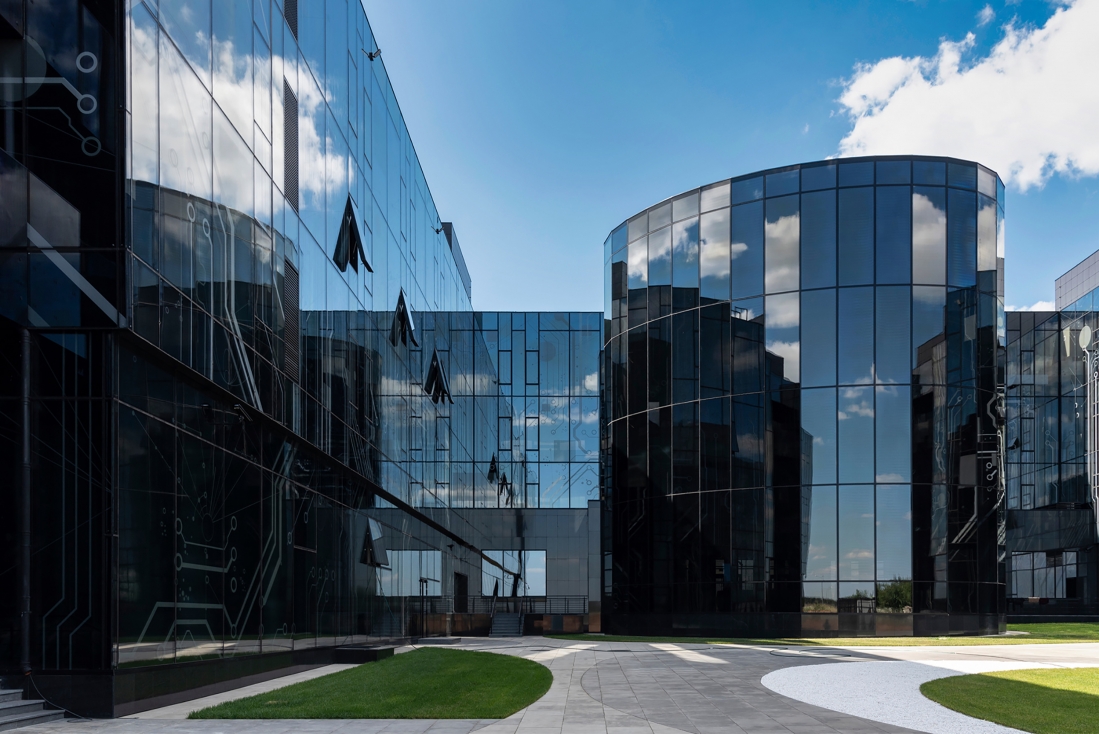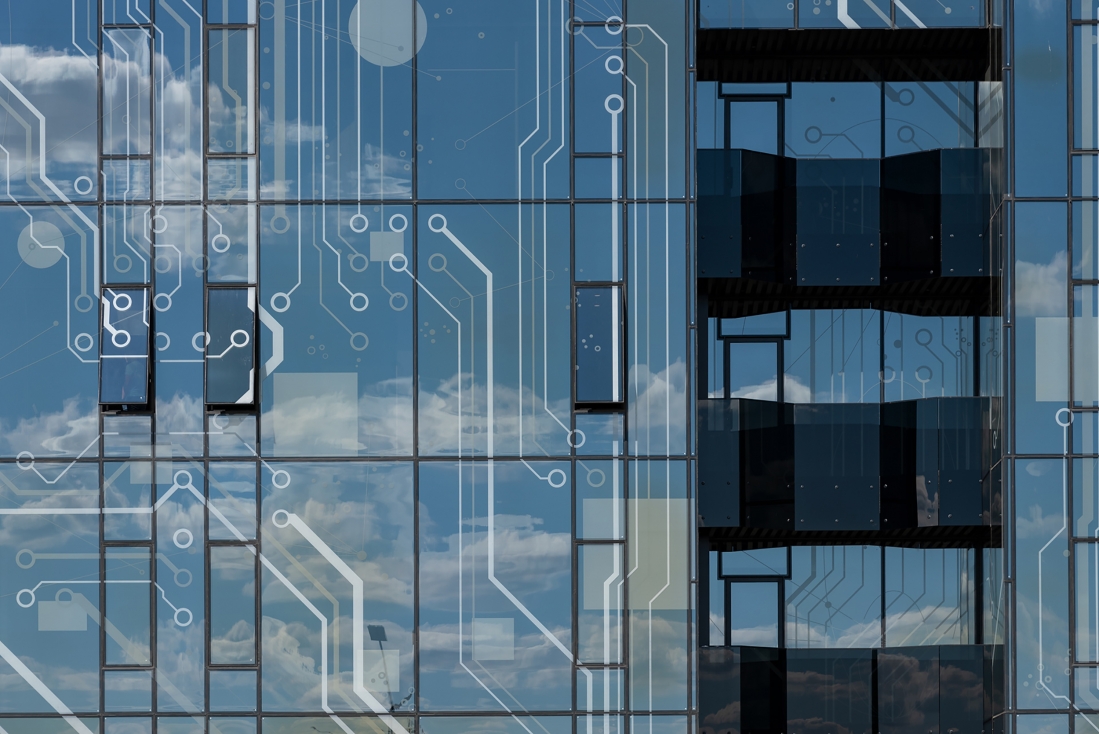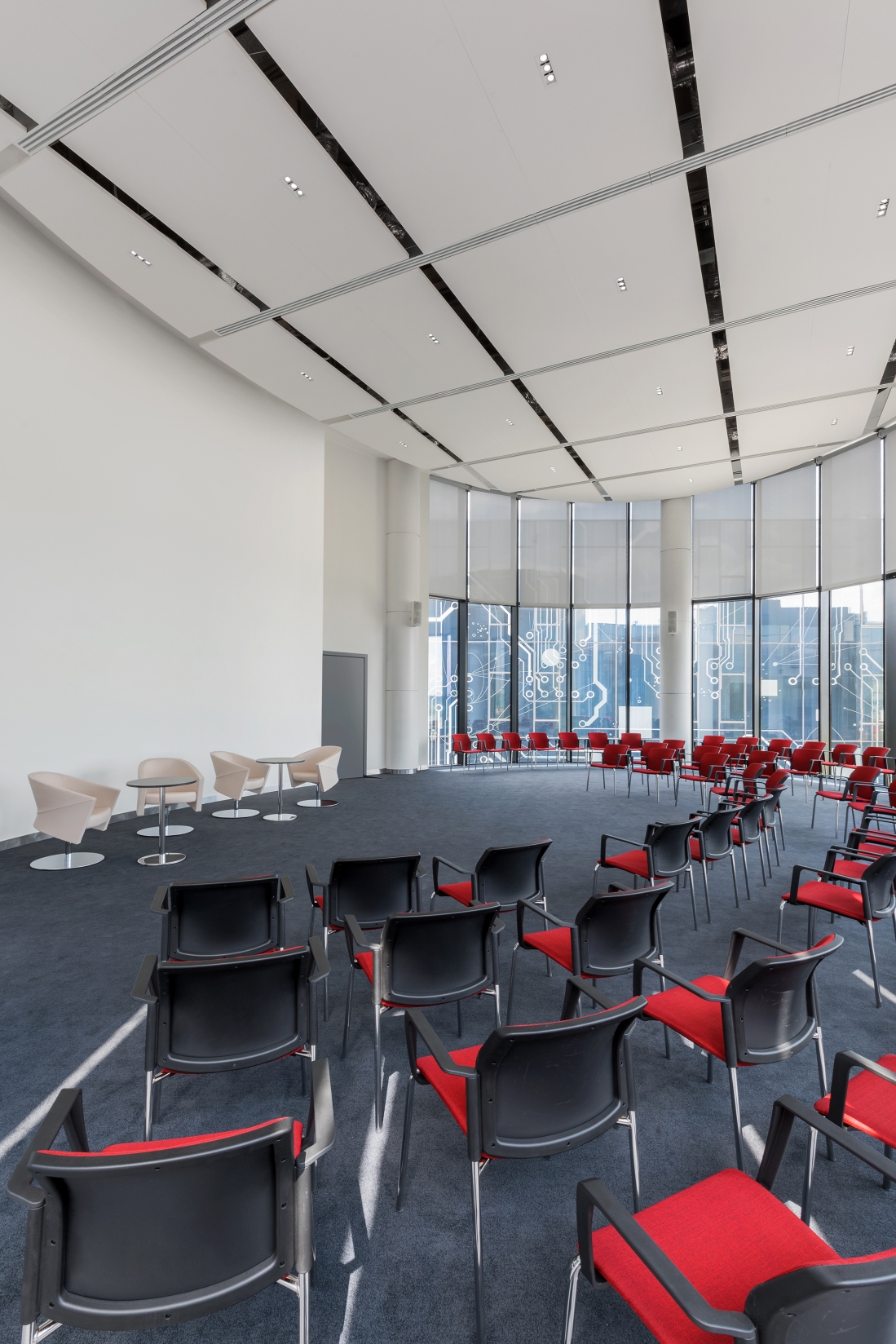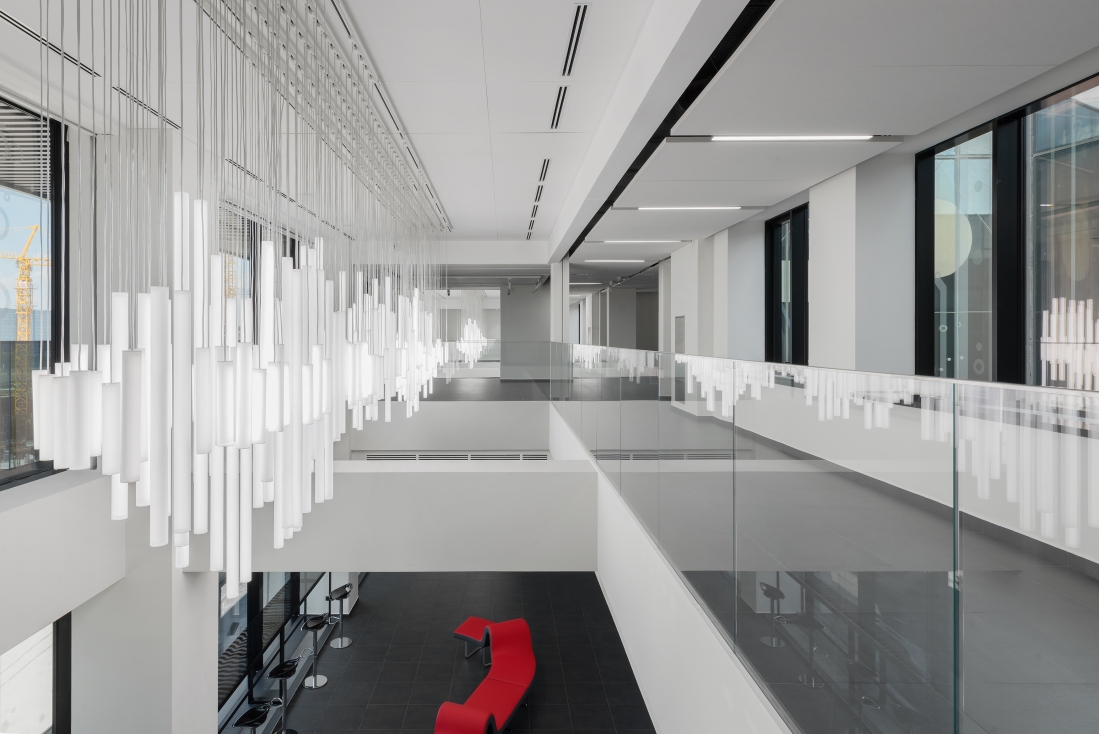Studio “Arcanika” created a project of renovation of the technological-scientific center PJSC “Tatneft”
Technological-scientific center “Tatneft” was built in 2019 on the territory of Innovation center Skolkovo. Techno-cluster Skolkovo is an ambitious governmental project, created in a rural area on the border of Moscow. It unites idea of the “futuropolis” and Silicon Valley.
According to the idea of ex-president Dmitry Medvedev and his team, Skolkovo had to become a unique urban area, designed according to actual scientific, urban and architectural tendencies. There are headquarters of companies, gymnasium, university, residential area and public spaces created by top Russian architects.
Architectural studio “Arcanika” created a project of renovation of the technological-scientific center PJSC “Tatneft”, including modernization of the building facades, interior design of representative and standard zones, a system of a navigation and landscape design of surrounding territory.
The idea of the project is to reflect the function of the building and the company’s activities in a new look. Pitch black, “oil-ish” colour of the jumbo glazing (maximum size 3800x2000) as well as print of microelements of technical devices, as an allegory of scientific achievements and technological progress, create a memorable visual decision of the façade. During nighttime this association becomes even more obvious: night illumination of the building turns on and it seems as if energy is flowing through numerous microelements.
The pattern is printed on the toned inner glass of double glazing. Owing to a big size of jumbo glazing it looks entire. The outer glass of the double-glazed window is triplex, the inner is tempered with energy-saving spraying. The glazing accentuates architectural proportions of the building and accumulates sunlight, creating comfortable insolation of offices and public spaces.
Laconic interiors became a logical extension of renewed facades of the building. Interiors are designed in monochrome colours with bright accents. All the rooms are made according to two types of finish: representative and standard zones. To the first type refer spaces of the central block of the building from 1st to 4th floor: exhibitional spaces, central hall, conference hall, director’s offices. To the second type refer offices, open-spaces, coffee-points, corridors, lavatories.
Double-light spaces of the central volume accentuate the connection between interior and exterior of the building. The façade glazing becomes a dominant transparent “wall”. The ceilings and even chandeliers for this zone are manufactured specifically for this object by individual design.
A layered ceiling of the hall and conference hall (3d floor) is made of large-scale acoustic panels. It allowed not only hide and organize engineering systems (HVAC), automatic sunshades and lightening design, but improve acoustic characteristics of the space as there use to be an echo, formed by glass “walls” of the oval space.
Curved shapes of the lobby are repeated in a chandelier which looks like a set of interlacing circles of different diameter, composed in several layers, that was individually made from an architect’s sketch. Parametrical reception desk id thoroughly designed in order to fit equipment and worktables. Composite material usage allowed to follow the sketch up to a millimeter, as well as integrate diagonal LED-lightening in a complex shape. Another reception desk is located in the administrative area of the building, which draws attention by a tactile surface, which looks like boiling metal.
A conference hall and an exhibitional area in front of it are located on the third floor of the building. The exhibitional area can be observed from the fourth floor as there is a pathway along the side wall. An individually designed chandelier composed of several rows of cylindrical bulbs in a double-light space reminds a floating glowing cloud.
The square in front of the building is an all-season public space, uniting all the nearby quarters. Main pedestrian flows from nearby bus stations cross the square so it uses penetrability principle. The drawing of the landscape design reminds an opening lotus. Green ellipses, lotus “petals” create an optical illusion, both at the pedestrian level and from the upper floors of the building. An inner yard, stylized as an oriental garden with its plants, promenades, covered with granite crumb, decorated with black shungite stones and green islands, is surrounded by facades from three sides and which serves as a recreation area for employees and guests of the Center.













